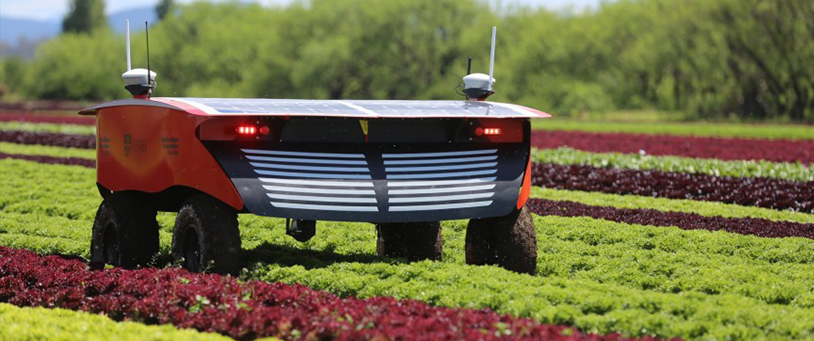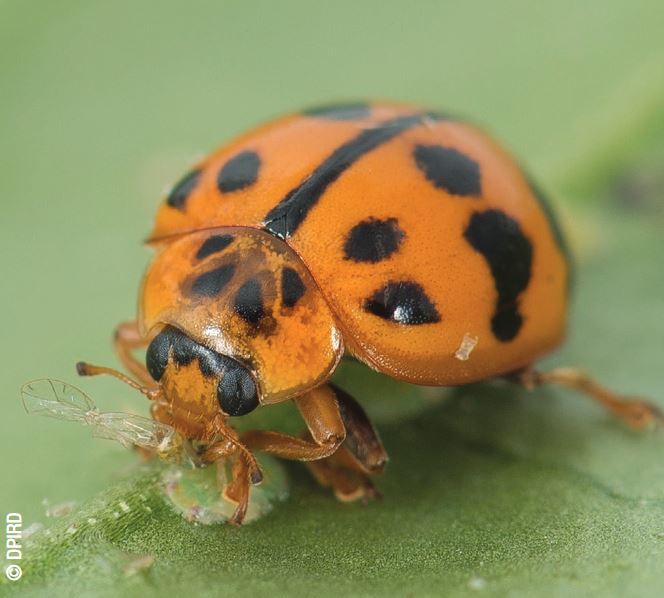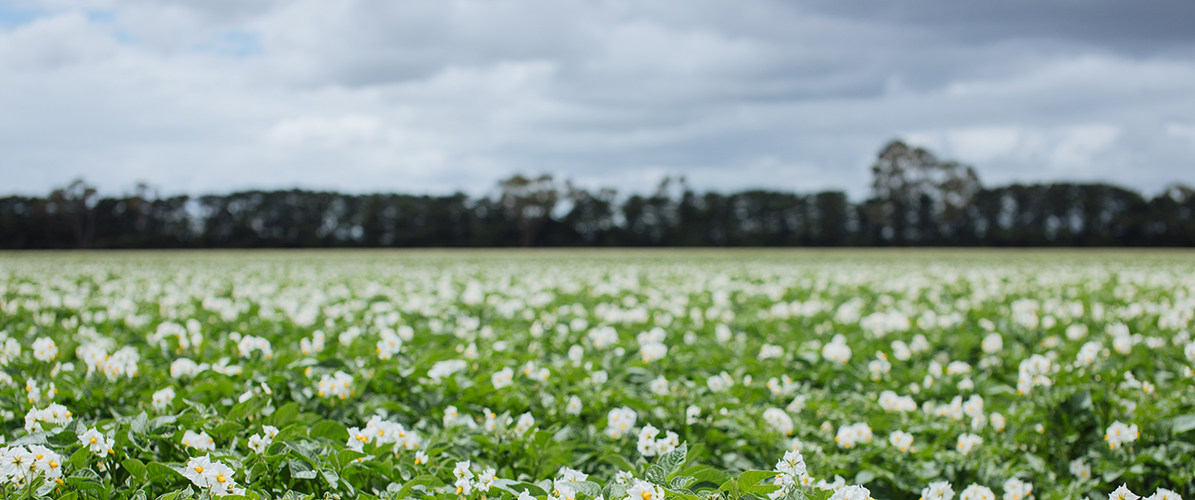
RIPPA functionality and industry update video
3 July 2018
Biological controls for TPP – Trial results
4 July 2018We’ve collected some of the most common questions about tomato potato psyllid (TPP) to help you understand this pest, its impact and what you can do to help prevent its spread.
Overview
Tomato potato psyllid (Bactericera cockerelli) is an exotic plant pest which feeds on a range of host plants, including potato, tomato, eggplant, capsicum, chilli, tamarillo and sweet potato.
TPP is a tiny sap-sucking insect with three stages of development – egg, nymph and adult. All stages are very small (less than 3mm) but can be seen with the naked eye.
Adults and nymphs cause injury to plants when feeding.
- Adult TPP are about 3mm long and resemble small winged cicadas in appearance, but are the size of an aphid. The body is brownish and has white or yellowish markings and a broad white band on the abdomen. Wings are transparent and rest roof-like over the body.
- Nymphs are up to 2mm long and are oval shaped. They have a flattened scale-like appearance. Young nymphs are yellow with a pair of red eyes. Older nymphs are greenish, fringed with hairs and have visible wing buds.
- TPP eggs are less than 1mm long and are attached to the plant by a short vertical stalk. They are usually laid on the lower surface of leaves or as a halo around the leaf edge. Eggs are white when first laid then turn yellow to orange after a few hours.
TPP can carry the bacterium Candidatus Liberibacter solanacearum (CLso) which is associated with zebra chip disease in potato.
TPP is an insect pest of a range of plants in the Solanacae family, including potato, tomato, eggplant, capsicum, chilli and tamarillo, and some in the Convolvulaceae family such as sweet potato.
The weeds nightshade, groundcherry, matrimony vine and field bindweed are also hosts of the pest.
Check your crops for signs of TPP. This is the most reliable way to detect TPP. If you grow TPP host crops, look for insect life stages on the underside of leaves.
Signs and symptoms of TPP include:
- Adult psyllids jumping from foliage when disturbed
- Stunting and yellowing of growth tips
- Yellowing or purpling of leaf margins
- Severe wilting of plants caused by high numbers of psyllids feeding
- ‘Psyllid sugars’ – white sugar-like granules excreted by adults and nymphs, which coats leaves and stems, and leads to growth of sooty mould.
- Stem death symptoms are similar to other potato and tomato disorders.
Sticky traps can be used to monitor for winged adult TPP.
- Practice good farm biosecurity to prevent the entry, establishment and spread of pests and diseases on your property. More information on biosecurity is available at the Farm Biosecurity website.
- Be vigilant in checking for signs of TPP and report any unusual symptoms to the department as soon as they are identified.
- Follow instructions set out in the Quarantine Area Notice and associated FAQs for the movement of host plants (available on the DPIRD website).
You can report via app, phone or email to the Department of Primary Industries and Regional Development:
- Download the MyPestGuide Reporter app, available from the Google Play or the Apple Store.
- Report it immediately to the relevant state or territory agriculture agency through the Exotic Plant Pest Hotline: 1800 084 881.
This is the first time TPP has been detected in Australia. The origin is unknown.
TPP is present in other countries, including the USA, central America and New Zealand. It can spread through the movement of host plant material, and disperse through natural pathways such as flight, wind and human-assisted movement (like movement of plant material).
TPP can carry the bacterium Candidatus Liberibacter solanacearum (CLso) which is associated with Zebra Chip disease in potato.
There have been no detections of CLso in Western Australia to date following multiple rounds of surveillance.
Detection of CLso would be reported to the Australian Chief Plant Protection Officer, and would change the risk profile and management strategies for TPP.
Home gardeners
TPP is a significant production pest in other countries where it is present, including the USA, Central America and New Zealand.
TPP is a tiny sap-sucking insect which causes damage to plants, leading to loss of plant vigour and yield.
TPP can transmit the bacterium Candidatus Liberibacter solanacearum (CLso), which is associated with zebra chip disease in potato.
If you grow plants that are hosts for the pest, look for insect life stages on the underside of leaves.
Signs and symptoms of TPP include:
- Adult psyllids jumping from foliage when disturbed
- Stunting and yellowing of growth tips
- Yellowing or purpling of leaf margins
- Severe wilting of plants caused by high numbers of psyllids feeding
- ‘Psyllid sugars’ – white sugar-like granules excreted by adults and nymphs, which coats leaves and stems, and leads to growth of sooty mould.
- Stem death symptoms are similar to other potato and tomato disorders.
Sticky traps can be used to monitor for winged adult TPP.
Be vigilant in checking for signs of TPP and report any unusual symptoms using the Exotic Plant Pest Hotline on 1800 084 881.
Control TPP in your plants using available chemical or organic spray options, and dispose of infested plant material using the solarisation technique. For more details on managing TPP in your plants, see our home gardener information page.
Control weeds such as nightshades, African boxthorn and other Solanaceous plants, which are hosts for TPP.
A Quarantine Area applies restrictions to the movement of commercially-produced and home-grown host plants from that area to other parts of the state or country.
If you live in a Quarantine Area:
- Do not move home-grown host plants from within the Quarantine Area to areas outside the Quarantine Area.
- Do not move plants purchased from farmer’s markets/roadside stalls within the Quarantine Area to outside the Quarantine Area.
- Check any plants that you purchase for TPP and report any suspect signs using the Exotic Plant Pest Hotline on 1800 084 881.
For information on any existing TPP Quarantine Areas, use our TPP portal and use the “Quarantine Area Notices” filter.
Yes, home-grown fruit and vegetables can be moved outside of the Quarantine Area.
To minimise the risk of spreading TPP, home gardeners are encouraged to inspect home-grown fruit and vegetables for signs of TPP, and wash their produce before moving off their property.
Do not move host plants from within the Quarantine Area to areas outside the Quarantine Area.
Yes. The products available to treat plants for TPP have been approved by the Australian Pesticides and Veterinary Medicines Authority for use on a wide range of fruit and vegetable crops. This means they have been thoroughly assessed to ensure the safety of the user, the public and the environment, when used according to label directions and state legislation.
Biosecurity
Farm biosecurity is a set of measures designed to protect a property from the entry and spread of pests and diseases. Farm biosecurity is your responsibility, and that of all visitors and workers on your property.
Proper signage to restrict entry, routine surveillance for pests, on-farm clean down facilities, and developing a biosecurity action plan and checklist are all part of a farm biosecurity regime.
The weeds nightshade, groundcherry, matrimony vine, and field bindweed are also hosts of the pest and management of these should be considered.
More information on biosecurity is available at the Farm Biosecurity website.
AUSVEG has also collected a range of resources to help you manage your biosecurity, which are available in the biosecurity and crop protection section of our website.
Some content on this page has been reproduced with the permission of the Department of Primary Industries and Regional Development, Western Australia.

